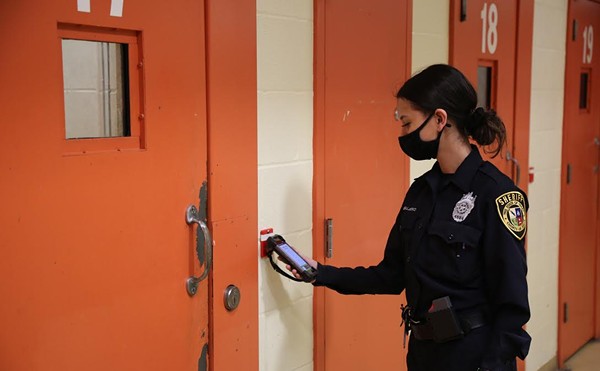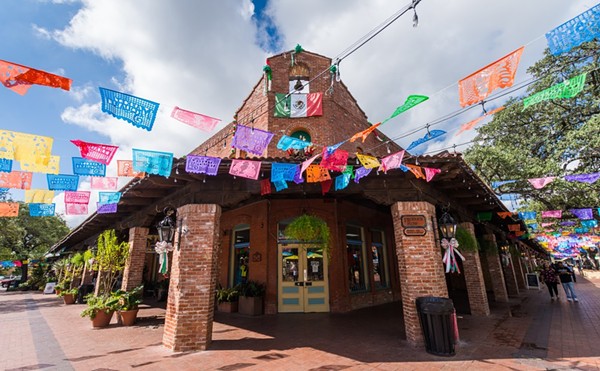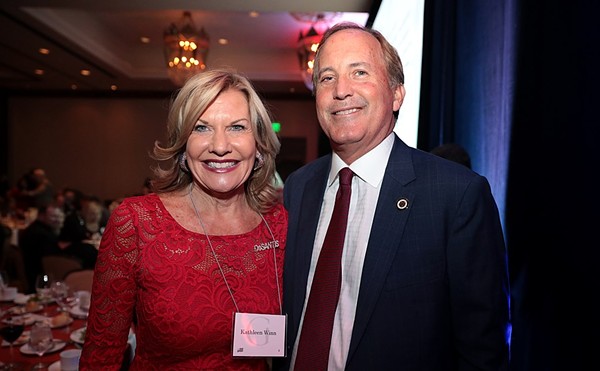Driving a well-used pickup truck with his tree-climbing dog “Cory” in the bed, David Bamberger wheels out of a picturesque field up slippery limestone scrabble. The day is a Hill County idyll, with one tour-jarring revelation. As we climb a small rise, an elevated deer blind comes into view. Bamberger’s displeasure is obvious. Nodding back down the hill toward a winch not more than 100 yards away that will hold a deer feeder when hunting season opens in November, he nearly spits. “You might as well be at a shooting range.”
Yet this is where every one of his “high-dollar” guests will set up in the coming months. By contrast, the more adventurous, less-affluent visitors stalk their prey through the brush, most times having to pull the lifeless bodies of white-tailed deer and axis out of rough ravines. But it is the rich guests whose patronage almost allows Selah Bamberger Ranch Preserve to break even each year. And they demand a steady supply of cold beers at the ready, a hired guide to price each animal that approaches the feeder, cell phone service, and in the bunk house: a TV.
Bamberger’s eyebrows scroll into angry peaks worthy of Jack Nicholson. “I hate it. Oh, I hate it,” he confesses. And yet, he not only welcomes the hunters back every year, he also pays for satellite year round to make sure his personal money makers have their precious 60 days of service.
It’s just one of the compromises Bamberger, one of the state’s most respected environmentalists, has had to make. He’s not prone to make many. The self-made millionaire sunk the money he made on early Church’s Chicken franchises into the land to demonstrate how even the most abused, overgrazed plot of Hill Country could be nursed back to health with good land management practices. There are no soda machines to be found on the 5,500-acre ranch that hosts children from area schools much of the year for three-day, two-night outdoor education retreats. He waxes poetic about the expressions on the childrens’ faces after staffer Steven Fulton successfully calls down a screech owl during a night hike to then catch the bird in the light of a search lamp. “That is something they’ll never forget.” And then: “If we didn’t do that, we wouldn’t be losing money.”
It’s clear that finances have been on his mind a lot lately. He lost $70,000 last year, he says. And that was a good year.
When a group of amateur naturalists crowd into a recreated dry goods store during a Saturday tour of the ranch, a clapboard structure nailed together from pieces of salvaged barns and homes taken from across the area, Bamberger chronicles his earlier efforts to donate the place to the Audubon Society. The group wouldn’t take possession of Selah, he said, unless he could include a $2-million endowment to offset future management costs. Today, Bamberger figures he needs closer to $10 million to guarantee the ranch and preserve’s continuance as it is. He seems disappointed that the two dozen visitors have already read his book. That he can’t sell but a single hard copy, at a profit of a couple dollars.
It’s clear: it will either have to start raining bags of money over Selah or it’s time to make more practical use of hundreds of graceful creatures he helped save from the brink of extinction — the scimitar-horned oryx.
We drive through the gate and into the pasture carefully. It’s just a few days since several inches of rain dumped in this country. Before us are about 30 female oryx milling about the bales of hay — African kleingrass, which the natives of North Africa definitely prefer, he says — complemented by as many as five buff-colored juveniles. The adults shelter the young behind their sweeping profiles; some urinate in our direction, perhaps getting ready to bolt. Bamberger says his herd is not the only one in Texas. Thanks in part to his involvement in decades of breeding work, performed under strict supervision by the U.S. Fish and Wildlife Service and the Association of Zoos & Aquariums, there are another 1,600 at a handful of other ranches. Most are located in deep South Texas at a single ranch where hunters are still allowed to kill them for a price.
Most of the exotic animals across the Hill Country originally came out of the San Antonio Zoo, where Bamberger was once a board member, serving alongside other area ranchers with close ties to state, national, and international “safari” clubs. But the animal climate has changed a lot inside the AZA since the 1980s. The “bunny huggers,” as Bamberger calls those he sees as overly influenced by animal rights groups like the People for the Ethical Treatment of Animals, now hold sway.
It was 1979 when the AZA undertook a Species Survival Program to look at how they could assist in the recovery of disappearing species around the planet. Bamberger, who would become the first private landowner accepted as an AZA member, offered up 640 acres to take in any species the group found appropriate. They chose the scimitar-horned oryx. Many within the organization were skeptical that “a bunch of cowboys” could do the job, Bamberger said. In 1980, with only 1,100 known animals remaining on the planet, Bamberger was supplied a herd of 28 and spent $100,000 of his own money on fences and chutes so they would have access to hundreds of uninterrupted acres. Each August, researchers at the AZA instructed his team in which animals to breed and, over time, he built the herd up to 400, offering the species another 150 years’ of survival, he said. Soon, Bamberger was shipping oryx to zoos across the country and locations around the world.
Lynn Cuny, founder and director of Wildlife Rescue & Rehabilitation, a nearby wildlife sanctuary that takes in both native and exotic animals, said any species recovery program needs to ask a fundamental question, “If we’re going to save somebody, what are we saving them for? ... If we ever stop asking that question, to me that’s being irresponsible.”
In a stark contrast to Cuny’s sanctuary, Bamberger allows hunting on his land — just not of the oryx. And while his herd’s health improved and grew more genetically diverse, those animals cloistered on area hunting ranches were being increasingly strained. The result was increasing genetic mutations. “These ranches that had stocked and bred the animals were seeing babies born blind or with permanently splayed legs,” Bamberger said. One area rancher rang him up for his opinion about a newborn oryx that he hoped would be worth top dollar to a hunter one day. It turned out not to be not only a unique albino calf as the man thought, but a blind one with splayed, unusable legs.
Soon, the AZA began to declare some of Bambergers animals “surplus” to the Species Survival Program, or SSP, allowing him to sell them to those game ranches, which he did despite his moral aversion to “canned” hunts. Bamberger hoped the added income would make his participation in the SSP if not into a money-maker, at least not a losing proposition. By this time, he’d been to Africa twice to scout out potential sites for re-introduction of the species, paying for each trip himself. Increasingly, he found the AZA turning against him. They were requiring more and more paperwork while slowly removing some of the best genetic strains out of his herd. He dropped out of the organization about eight years ago after becoming convinced the association was angling to end their decades-long relationship. (Calls to two AZA press agents were not returned before Tuesday’s press deadline.) Soon enough, he would be even more isolated.
In 2005, Fish & Wildlife finally listed the scimitar-horned oryx, a native of North Africa, as an endangered species in the United States. Yet the agency seemingly failed to ask that most important of questions: why. Even as they added the animal to the endangered roster, they tacked on a controversial exemption that allowed ranchers to breed species like the oryx without having to prove that what they were doing was actually helping the species.
Two separate lawsuits challenged the agency, calling the allowance a violation of the Endangered Species Act. “There was absolutely no evidence that any of these facilities had made any attempt to reintroduce any of these animals back into the wild,” said Mike Senatore, vice president for conservation law for Defenders of Wildlife. Bamberger’s operation, he said, was the lone exception to the near-universally exploitative practice of the so-called “game” ranches.
While both Safari Club International and Exotic Wildlife Association rallied to the federal government’s aid in the hopes of maintaining their membership’s ability to breed the animals for sport, U.S. District Judge Henry Kennedy, Jr., ruled in the summer of 2009 against the feds, finding that a blanket exemption for the breed was not justified. With the loophole now closed — making “harming, pursuing, hunting, shooting, wounding, killing, trapping, capturing, or collecting such species” a major no-no — Texas ranchers who have previously kept such animals are looking to unload. Suddenly the only antelope on the planet with the ability to kill a lion, a former star attraction on the hunting circuit worth thousands of dollars per head, is animalis non-grata.
A scout for an upcoming 60 Minutes episode on the issue expected to air this fall told Bamberger he saw one Texas rancher kill 12 of the long-horned antelope and bury them rather than just allow them to live out their lives on his property. “Nobody will hunt it anymore. Taxidermists won’t take it. It’s just a big-ass liability,” Bamberger said, predicting “within 20 years every single one of `the oryx` will disappear.” Eliminating the sport hunters from the equation will “hasten their extinction.”
Bamberger has increasingly come to see exotic animal hunting as a way to supplement the ranch’s income and help preserving his Selah Ranch and Preserve. He plans to apply for a scientific breeder’s permit with the Department of Interior to allow him to continue breeding and — in a move that would be the first for Selah — offer the hunting of oryx on his land. “With that breeder permit you can shoot that scimitar-horned oryx and you can sell it to a hunter and you have a certificate you can give to a taxidermist and he will be able to mount it, like a bald eagle or something,” Bamberger says as we exit the pasture. “I don’t know if that’s true but we are doing that application now in the hope that it’s true.” Then, sounding only a little resentful, he adds: “The AZA may not like it, but I’m not a member anymore.”
Senatore suggests it may be tough for Bamberger to get his way. “I don’t see that as something the Fish and Wildlife can legally authorize.” But the broader exotic-animal hunting community hasn’t given up, either. Charly Seale, executive director of the Exotic Wildlife Association, said his group is appealing the oryx’s Endangered Species listing.
Back at Bamberger’s hilltop home, there are no marble-eyed heads gazing down from the walls. No erect bear glaring dumbly from the corner. Instead, there are books — lots of them. He plays me a video about the outdoor education classes that he is obviously proud of. He makes us sandwiches. Then his earlier words come back to me. “There isn’t nobody but me that’s ever going to get that license from that Department of Interior. These ranchers, they couldn’t touch it. … I’ve got 31 years behind me. I’ve got more press and publicity than anybody, all the things that back up that I’ve got the credibility.”
As I’m leaving the ranch, I’m wishing Bamberger success with the children, with the preserve, with his message of wildspaces for the common good, and for the continued good stewardship that has brought him recognition from scores of conservation organizations. But I wonder: what if it was an oryx at that deer feeder and Bamberger was in the blind? After struggling so hard to restore this majestic creature’s numbers, is he really ready to strike up the compromise he’s pursuing? Could he kill an oryx?
“I couldn’t do that,” he tells me later. “I quit hunting 30 years ago.” •


















